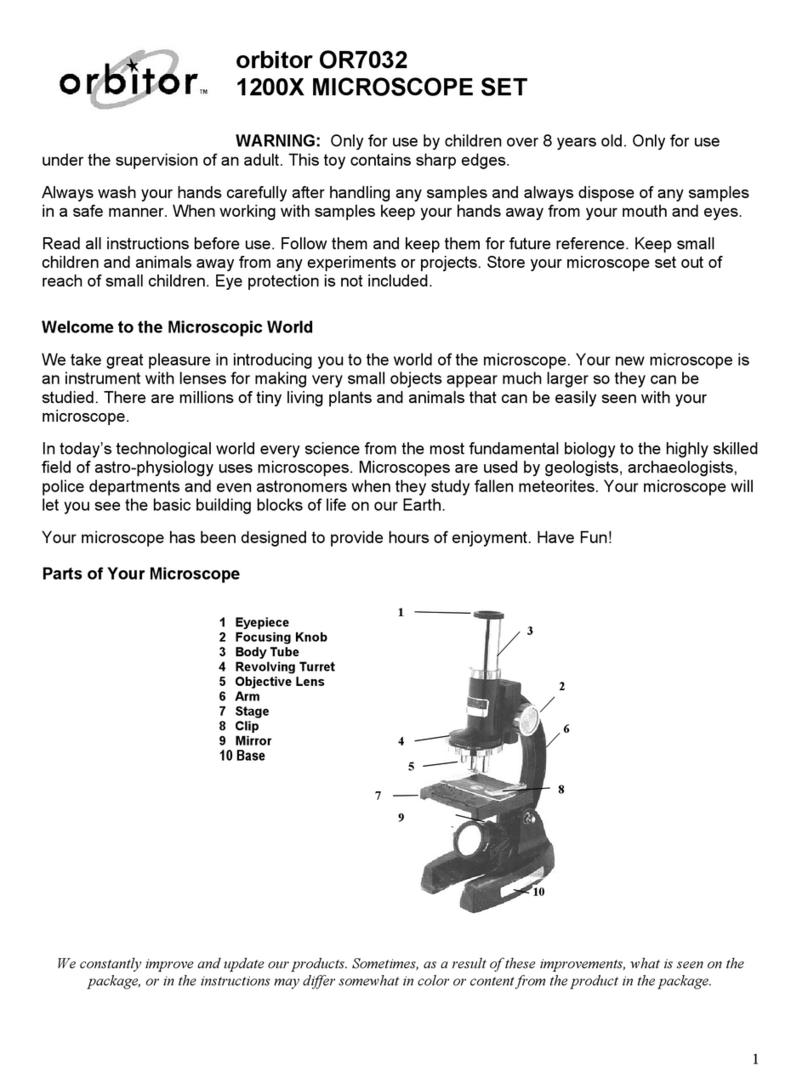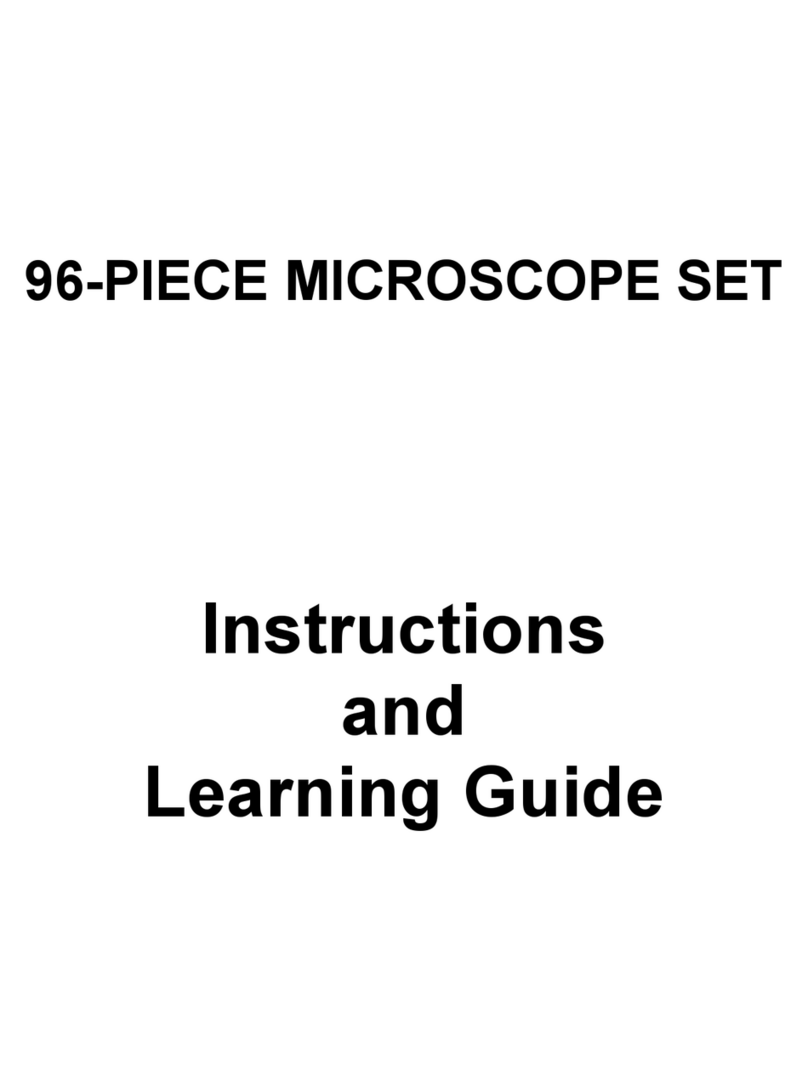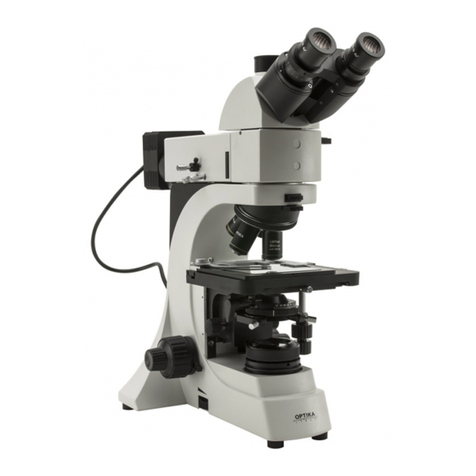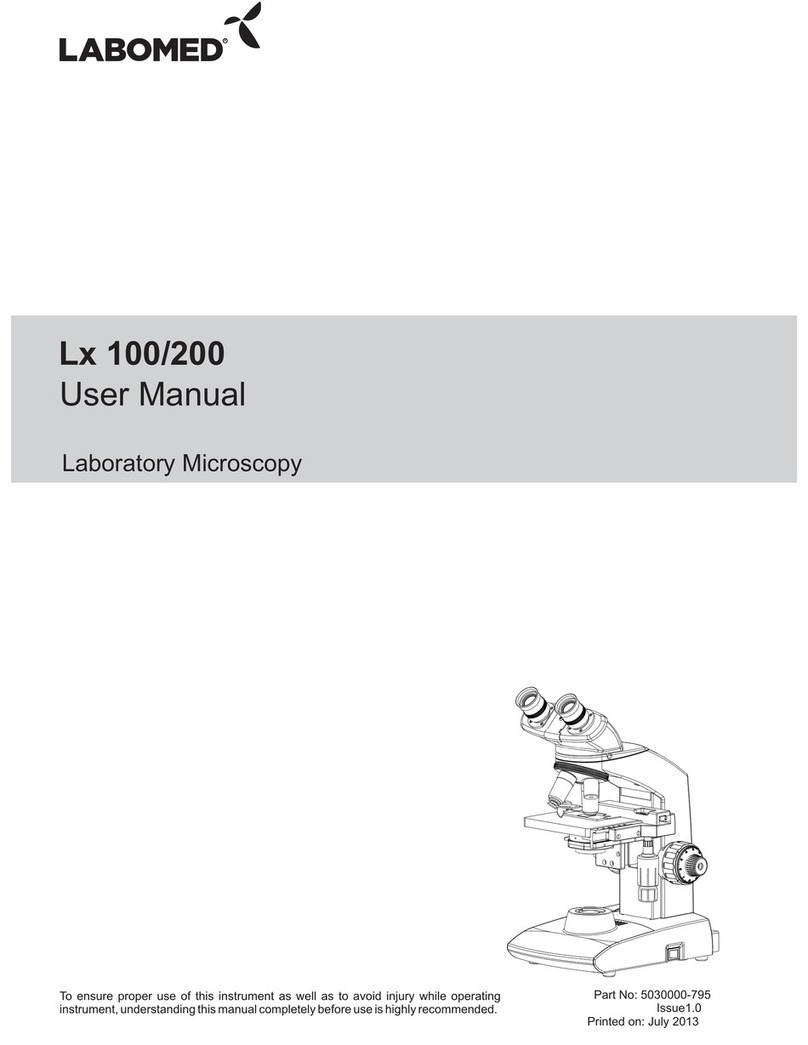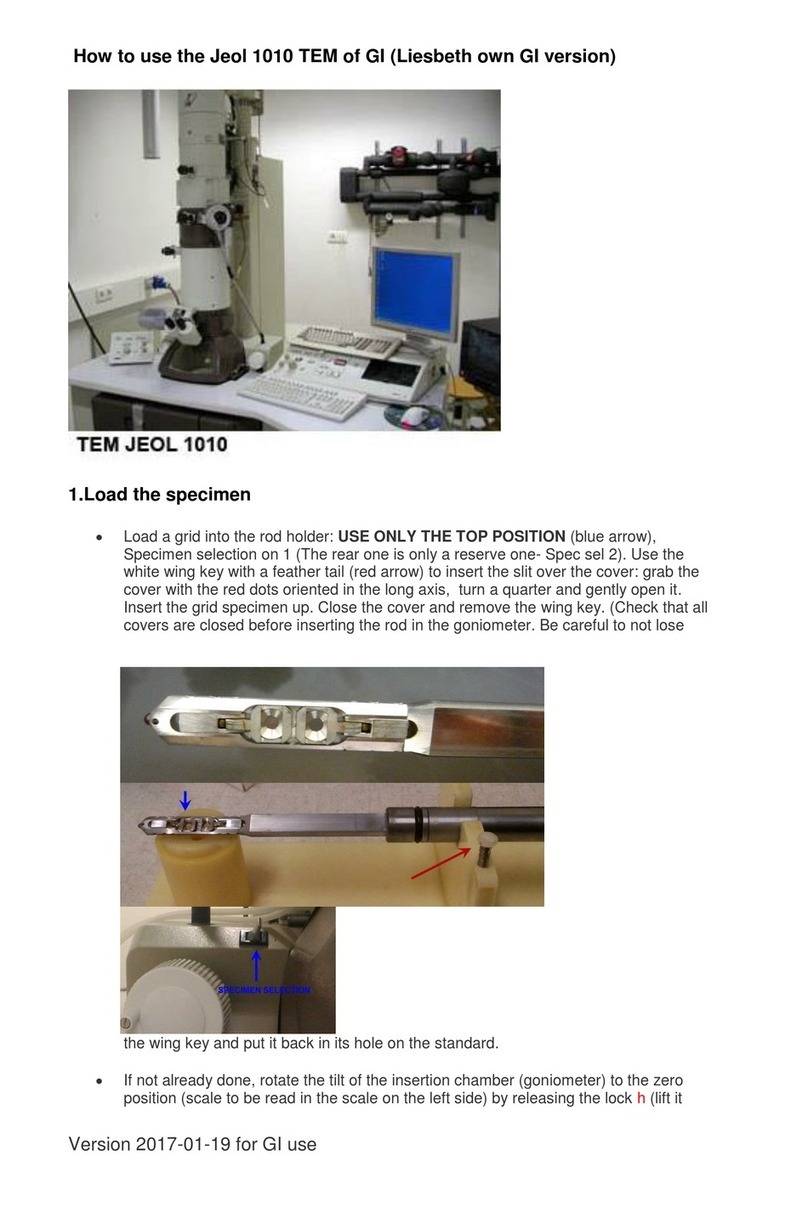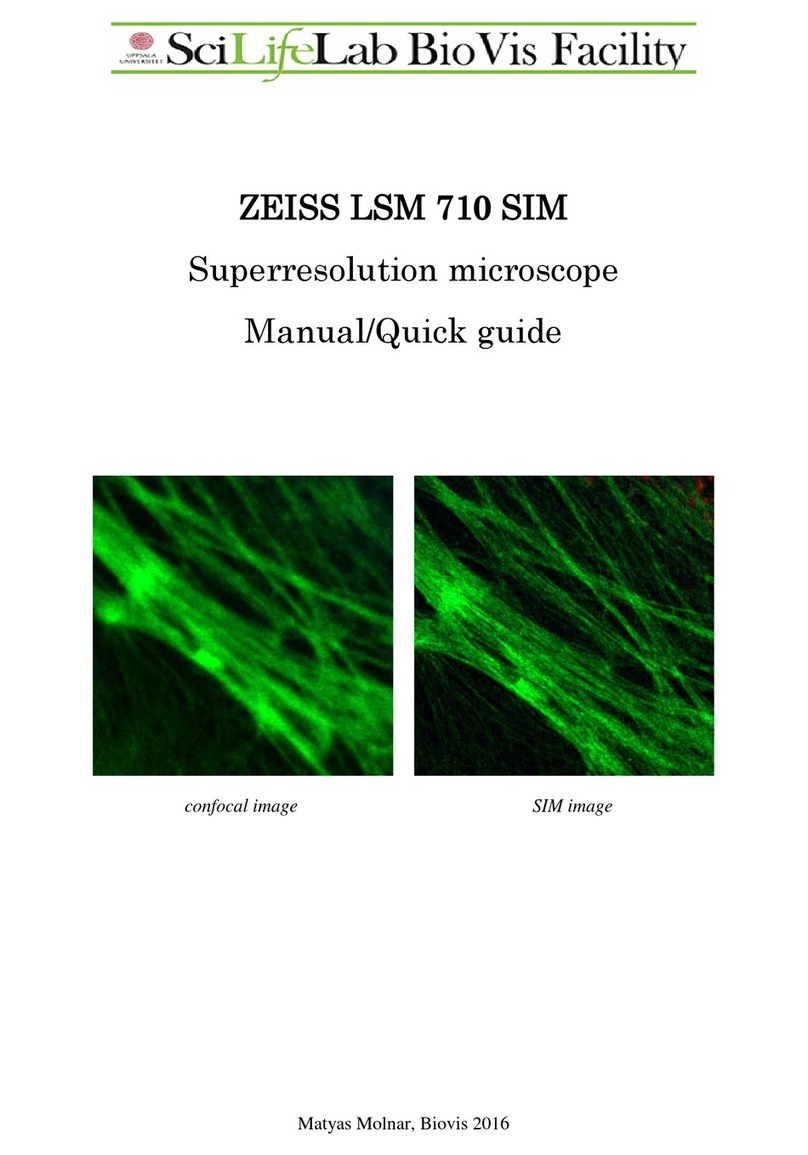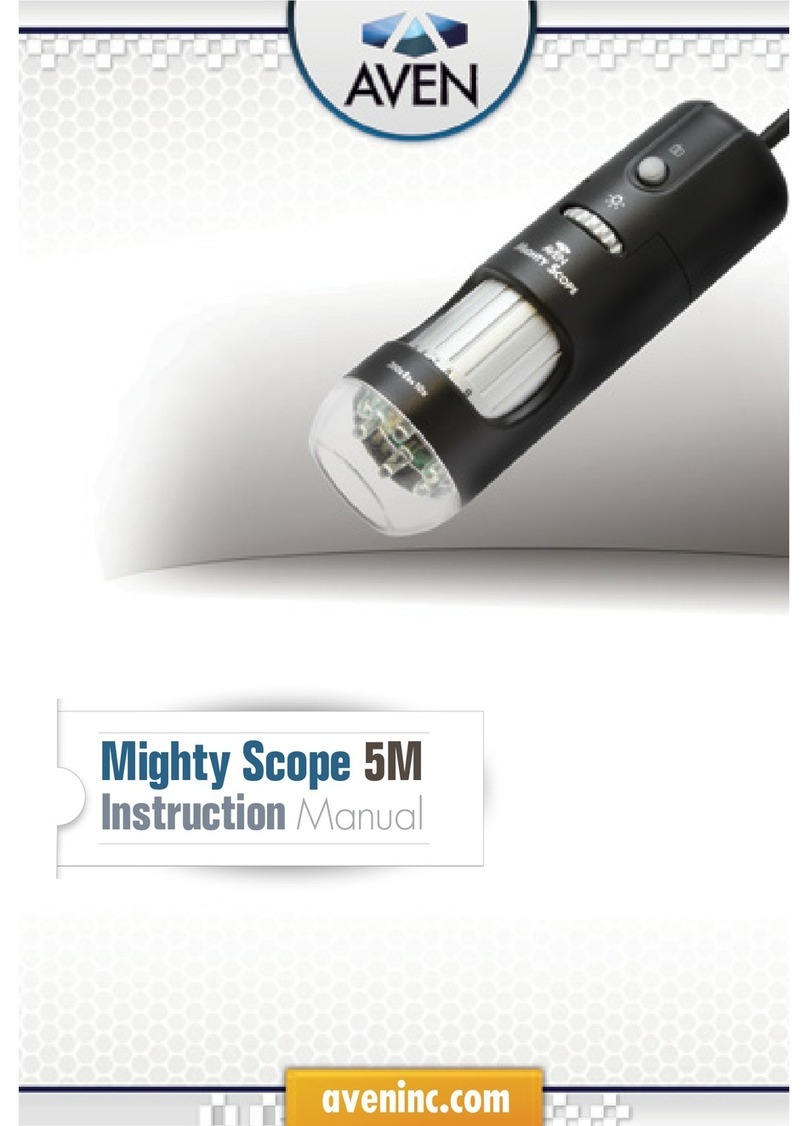Citiwell OR200XL User manual

1
MICROSCOPE
INSTRUCTION
MANUAL
and
LAB
PROJECT
BOOK
Manual Part # 259986
orbitor OR200XL
2
1
2
3
4 5
6
7
8 9
10
11
12
13
14
15
16
17
18
19
20
21
22
23
24
25
26
27
28
Recommended for ages 8+
orbitor OR 200XL Set - Parts & Contents:
1Carrying and Storage Case 15 Specimen Vials
2Eyepiece Holder 16 Slide Covers
3Focusing Knob 17 Slide Labels
4Objective Lens 18 Red Dye and Blue Dye
5Microscope Arm 19 Scalpel
6Stage with Slide Clips 20 Spatula
7Mirror and Electric Illuminator 21 Dissecting Needle
812.5X Eyepiece (Gives 200X) 22 Tweezers
95X Eyepiece (Gives 80X) 23 Magnifier
10 Eyepiece Storage Containers 24 Measuring Graduate
11 Spare Bulb 25 Petri Dish
12 Test Tube 26 Slide Storage Case
13 Pipette 27 Prepared Sample Slides
14 Stirring Rod 28 Blank Slides
We constantly improve and update our products. Sometimes, as a result of these improvements, what is seen on the
package or in the instructions may differ somewhat in color or content from the product in the package.

3
Welcome:
Welcome to the amazing world of the microscope! A microscope opens
up hidden worlds everywhere. It is an essential tool in biology, chemistry,
geology, gemology, forensic sciences and more.
A microscope can show a world of life in a drop of pond water, it can
show living cells and their component parts. Crystalline structures show
the building blocks of materials. Rock samples can show ancient
microfossils. Harmless insects can look like ferocious monsters.
You now own a precision made microscope that can show you all of
these and much more.
Please take the time to read this manual and become familiar with the
proper operation of your microscope.
Getting Started:
First, insert 2 “AA” alkaline batteries in the base of the microscope. In
order to remove the bottom cover of the microscope you will need a
Phillips head (+) screwdriver. Insert the batteries as shown, making sure
that the (+) and (-) terminals are properly identified. Replace the bottom
cover and re-insert the screw. Do not over-tighten.
How to Use the OR 200XL:
In order to appreciate how easy this microscope is to use let’s run
through a simple observing procedure.
1) Set the microscope on a sturdy flat surface like a desktop.
2) Check that the eyepiece marked “5X” is in position, inserted into
the top of the microscope tube. If the “12.5X” eyepiece is in
position you can replace it by gently lifting it straight up and
replacing it with the “5X” eyepiece.
3) Position the microscope so that it is pointed towards a window
(make sure that any blinds or curtains are open), or a desk lamp.
4) Look down into the eyepiece. You can now tilt the microscope
back until you find a comfortable viewing angle by firmly gripping
the microscope tube and pulling it backward and slightly down.
4
5) When looking into the microscope you will see the circular
viewing field. Reach around to the front of the microscope and
locate the mirror.
6) Tilt the mirror until the circular viewing field is at its brightest. The
mirror can tilt up and down and sideways to obtain the most
efficient illumination position.
6A) If the room lighting is poor you will want to use the built-in
electric illuminator. It is located in the mirror assembly under the
slide stage. Simply turn the mirror over. The light will come on
and you can adjust it for maximum brightness by moving it
slightly until the maximum light output shines through the hole in
the slide stage under the lens.
6B When you have finished using the electric illuminator simply flip
the mirror assembly so that the mirror is face up and the electric
light will go out.
7) Now locate a glass slide of a subject that interests you. Position
the slide under the two metal slide clips. (See diagram.) Move
the slide around until the sample is positioned over the small
opening in the stage.
8) Now look down into the eyepiece and slowly turn one of the
focusing knobs. The microscope tube will move up or down,
depending on which direction the knob is being turned. You will
see the image of the sample get sharper and sharper as it
comes into the proper focusing position.
9) You can now gently move the slide around to see different
sections of the sample. Note how clear and bright the image is.
10) If you want to see more detail, lift out the “5X” eyepiece and
replace it with the “12.5X” eyepiece. You may have to slightly
adjust the focus. You have just increased the magnification from
80X to 200X.
11) When you have seen enough, remove the glass slide and
replace it with another. (Note: It is usual practice to start
observing at low powers, so you may want to re-insert the
eyepiece marked “5X.”

5
How to Make a Prepared Slide:
Samples for examination should be very thin so that light can pass
through them. If the sample is too thick it will appear dark in the
microscope.
Cloth fibers, pollen, dust or salt crystals will be easy to see and make
good samples for beginners to observe.
If the sample is very thin and clear a drop of red or blue dye may make
details show more clearly. To prepare the dyes in your set add enough
warm water to half fill the dye bottle. Replace the lid tightly and shake
well until the dye crystals are all dissolved. You can transfer a drop of
dye from the bottle to your slide with the pipette.
Be careful with the dyes as they can stain clothing, furniture or carpets.
A) Making a Temporary Slide
1) Wipe the slide clean.
2) Prepare a thin sample. You may have to slice it with a
scalpel or a razor blade. Be very careful. You may want
to ask for adult help.
3) Pick up your sample with the tweezers and put it on the
center section of the slide. Add one drop of water. If
needed you can now add a drop of dye.
4) Gently place a temporary slide cover (plastic) over the
sample, being careful not to allow any air bubbles in.
5) Remove any excess water or dye with a piece of paper
towel by pressing it down gently over the slide cover.
IMPORTANT NOTICE: Wash your hands before and after every project. Use
warm water and soap. Also wash any of your microscope kit equipment that
you may have used. Be very careful when handling the glass slides and slide
covers. Make sure that an adult knows what you are doing and is available to
help you.
6
PROJECT #1: Cloth Fibers
You will need: Your microscope
Scissors to cut small samples
Scrap pieces of cloth of different types.
Clean blank slides
All types of cloth are made from long, thin strands called fibers. Some,
like wool, come from animals. Others, like cotton, come from plants. Still
others are made from chemical actions. Nylon and polyester are samples
of man-made fibers.
Take small samples of various fibers such as cotton, wool and polyester.
Put one sample at a time between two clean, blank slides like a
sandwich. Put the slide sandwich under your microscope. Can you see
the difference between natural and man-made fibers?
Look at how tightly the strands are wound. Some are very tight and
smooth. Others are loose and spiky-looking. The loose fibers can trap
air. This trapped air can help to keep you warm. Compare a wool fiber
with a polyester fiber. Which one do you think will keep you warmer?
Notes:
Type of
Cloth Fiber
Is it Man
Made or
Natural?
Are the
Fibers
Tightly
Wound?
Are the
Fibers
Loose and
Spiky
Looking?
Will Keep
You
Warm?
PROJECT #2: Animal Fur
You will need: Your microscope
Two or more clean, blank slides
Samples of different types of fur and hair
Study samples of fur from cats, dogs, and even your pet hamster. Animal
fur is like the hair on your head. It protects the skin underneath from cold,
heat, and sunburn. Some animals have fine, smooth fur. Others have
stiff, bristly fur. Some is short and some is long. Long haired animals can

7
stay warm even when it is very cold. Their fur can trap and hold a layer
of warm air next to their skin. This is called insulation. Your house has
materials inside the walls and roof to trap air. This is also called
insulation.
Put several strands of animal hair or fur in between a glass slide
sandwich like you did with the cloth fibers and look at them under your
microscope. If you look closely at 80X or 200X magnification you might
see small rough lines going around each hair. These are growth lines. If
there is a large space between these lines the hair is fast growing. A lot
of small spaces between lines indicate a slow growing hair.
Some small paintbrushes have hairs from squirrels. Other brushes might
have bristles from pigs.
Pull out a single hair from your head. (Ouch!) Does it look like any of the
animal hairs?
Notes:
Sample
#
Where is
it from?
Is the
hair
smooth?
Would it keep
the animal
warm?
Can you see
growth
rings?
#1
#2
#3
#4
#5
#6
Project #3: Leaves
You will need: Your microscope
2 or more clean, blank slides
different types of Leaves
Plants breathe through their leaves! Most leaves have small holes in
their underneath side called stomata. They breathe in carbon dioxide
from the air and release oxygen back out. This is the opposite from
people. We breathe in oxygen and breathe out carbon dioxide. In this
way people and animals help plants and they help us. The fancy name
for a relationship like this is a symbiotic relationship.
8
Collect leaves from different tree and plant types. The needles of pine, fir
and spruce trees are also leaves, but they look a little different.
If you gather your leaves in the spring and summer they will be mainly
green. In the fall and winter they may be red or brown or orange; all
except the small fir, pine and spruce needles. They stay green all year
round. These trees are called evergreens.
Look closely at your leaf samples at 200X magnification. Look for
patterns of lines running through the leaf. These are the veins of the leaf
and they carry nutrients, or energy food back and forth between the leaf
and the main plant. One of these nutrients is chlorophyll. The leaf makes
chlorophyll with the help of sunshine and nutrients drawn up from the
underground roots of the plant. Chlorophyll is a bright green in color and
that is why the leaf is green in the summertime. When cold weather
approaches most plants keep the root nutrients safely inside the main
stem and the roots to help them get through the winter. When this food
supply stops the leaf stops making chlorophyll and loses its green color.
Notes:
Sample #
What plant
is it from?
What color
is it?
Can you
see the
veins?
Can you
see the
stomata?
#1
#2
#3
#4
#5
Project #4: Dirt and Sand
You will need: Your microscope
several clean, blank slides
several plastic slide covers
samples of dirt and sand from different places
specimen vials to hold the samples
pipette
water
Collect dirt and sand from around your house and from different
beaches. Use the specimen vials in your microscope kit to hold the

9
samples. Bring small samples home from your vacation. You will see
many small types of particles. Place a very thin layer of each sample on
a slide. Then add one drop of water and place a plastic slide cover over
the sample.
Dirt can have small pieces from rocks in it. It can also have lots of
organic material. This is made up of decomposed plant and animal
material. Dead leaves and grass get broken down and eaten up by
friendly bacteria and small animals like earthworms. Dirt that has lots of
organic material in it is called loam and it is very good for growing flowers
and vegetables in.
If the dirt in your garden does not have a lot of organic material in it you
can help it along by adding more dead plant material. A popular choice is
a plant called peat moss. This can be bought in big bags from any
garden center. This added plant material also acts like a sponge and
helps the dirt hold water to feed your plants.
Sand can be made up of small grains of different rock types that have
been broken down from bigger pieces. There can also be tiny fragments
of shells from long-gone sea creatures. In some places the beach sand
is black because the fine particles have been worn down from pieces of
coal!
Notes:
What do you see in your samples of dirt and sand? Be sure to wash your
hands when you are finished.
Material Sample 1 Sample 2 Sample 3 Sample 4
Rock
Particles
Shell
Particles
Small
Pieces
from
Plants
Coal
Particles
Insect
Parts
Which samples would make good garden soil?
10
Project #5: Paper
You will need: Your microscope
two clean, blank slides
writing paper
tissue paper
newspaper
paper towel
a pen
a little water
Compare different paper types by placing small pieces between two
slides. Paper can be made from many things. Most paper is made from
trees. Sometimes the paper maker adds finely chopped up cotton rags.
Other types of paper are made from paper that has been used before.
Paper can be thick or thin. It can be smooth or rough. It can be very
strong or very weak.
Paper is used to write on, to make packages with, to clean up spills, to
blow your nose on (yuch!) and even to make clothes with.
Paper to write on is smooth, while paper tissues are soft. Paper towels
are thick, while newspaper paper (called newsprint) is thin.
Get different types of paper and compare them. Try to write on them.
Then try to clean up a few drops of spilled water with each type. Then
look at them through your microscope. If you look at small pieces from a
magazine or newspaper you will see that the pictures are printed with
tiny dots of colored ink.
Notes:
Writing
Paper
Newsprint Paper
Towel
Face
Tissues
Can you write on
it with a pencil?
Can you write on
it with a pen?
How well does it
pick up spilled
water?
How strong is it?
How smooth is it?

11
Through your microscope you should have noticed that tissues and
paper towel have soft, fuzzy fibers that have big air spaces between
them. These air spaces can also hold water, which is why these two
samples did well picking up the water spill. The writing paper did not
have these air spaces and did not pick up water very well. The newsprint
did not work well either because its fibers are also closely packed.
Project #6: Crystals
You will need: Your microscope
two clean, blank slides
string
a drinking glass
very warm water (enough to almost fill the glass)
a spoon (to measure and stir with)
table salt
sugar
Take a piece of string about 3 inches (7.6cm) long and tie it around the
center of an old pencil. Now take a small drinking glass and almost fill it
with hot water from the tap. Be careful not to burn yourself. Stir in a
spoonful of salt until it is well mixed and has all dissolved. Now stir in
another spoonful and stir it well. If all of the salt dissolves in the water, try
and mix in a third spoonful.
Now place the pencil across the top of the glass so that the string is
hanging in the salt water. Place the glass somewhere safe where small
children cannot reach it. Do not move the glass around. Just let it sit
quietly. Leave it for a day and then examine the string. Leave it another
day and examine the string once more.
You will see small white cubes growing on the string. These are salt
crystals. This crystal structure is salt’s basic shape.
Try the same experiment with a strong solution of sugar. Sugar also has
a crystal shape. Is it the same as a salt crystal? Can you tell them apart?
Look at some of the crystals you have grown under your microscope.
Sometimes the little cubes will join together in strange or beautiful
shapes.
12
Project #7: Insects
You will need: Your microscope
two clean, blank slides
tweezers
specimen vials
Study the parts of ants, mosquitoes, spiders and flies. Handle the insects
with your tweezers and keep them in your specimen vials. Some can
look scary under a microscope. Can you see the powerful mouth parts
on some insects? They use these to eat plant parts or other insects.
Many insects have small hairs on their legs and bodies. These hairs help
plants. As the insect crawls from one plant to another small grains of
pollen get carried along. This pollen is needed by plants to reproduce. So
the insects are doing a good deed by spreading the pollen to many
plants.
Note the coloring on some insects. Insects with bright colors are flashing
a warning that says “Don’t eat me because either I am poisonous or I
don’t taste good. Don’t touch brightly colored insects, particularly
caterpillars. Wash your hands carefully when you are done.
Project #8: Pond Water
You will need: Your microscope
a pail or bucket
an empty jar
a pipette
clean, blank slides
glass slide covers
Get a sample of water from a pond in a wooded area. It is best to get a
sample in the late Spring or Summer. Dip your pail or bucket in the pond
to fill it. Let it stand still for about a half hour. Then dip your jar to the
bottom of the pail and try and get some of the sludge that has settled to
the bottom. Use your pipette to place a drop on a blank slide and place a
slide cover over it. To do this, stand the slide cover on end next to the
drop. Gently let it fall onto the drop. Push it lightly with a toothpick, but
not hard enough to squash any little animals. If water has squeezed out
around the edges you can touch a paper tissue to it to clean it up. Look
through your microscope. Start at 80X.
What are all of the small things you see? Are some of them alive?

13
You will see small bits of dirt and vegetation. If you are lucky you may
see small creatures moving around. Some of these are tiny baby insect
larvae. Others are very tiny animals that live in the water and feed on the
vegetation and on the insect eggs and larvae.
Make careful notes and drawings of what you see.
Things I saw in pond water:
4
PROJECT #9: Friendly Bacteria
You will need: Your microscope
clean, blank slides
glass slide covers
a pipette
yogurt (Must say “active cultures” on the label)
water
Petridish
14
Bacteria are very small life forms that you can only see through a
microscope. Some bacteria make us feel sick. But some bacteria are
friendly. Do you like yogurt? Did you know that friendly bacteria turn milk
into yogurt?
Put a drop of natural yogurt on a glass slide. Mix it with a drop of water
and put a slide cover over it. The sample should be spread very thinly.
Look through your microscope. Scan the area carefully at 200X. Try and
look at the thinnest areas. You should see small round objects. These
are the friendly bacteria.
Place several drops of yogurt in a Petri dish or sample vial. Mix it with
several drops of warm water. Do not cover your sample. Place it
somewhere relatively warm and out of reach. Wait for one day. Using
your pipette, place a drop or two on a slide and cover the sample with a
cover slip. Look for more bacteria.
You will probably see more bacteria. They were in the air and landed on
the yogurt. There may be different shapes than you saw the day before.
Draw pictures of what you saw.
Wash your hands thoroughly. Place the slide cover in the garbage. Wash
the slide in hot, soapy water with several spoonfuls of liquid bleach
added. Ask your parents to help you because bleach can hurt you and
the bottle is heavy.
Wash your hands again.
Notes:

15
Always keep your eyes open to find other ways to use your microscope.
Here are two examples:
Toothbrushes—Compare the bristles of a new toothbrush to some from
d, well-used one. Can you see why you should not use the same
toothbrush for a long time?
Printing—Compare printed material from different sources. Compare a
postage stamp with a piece of a newspaper or magazine picture. Can
you see the fine dots? How many different colors of dots are there? How
can dots of so few colors make all of the colors you see in a color
magazine picture?
BATTERY INFORMATION:
This unit uses two AA batteries. Always use fresh batteries. If the
unit will not be used for an extended term remove the batteries. Do
not try and recharge a non-rechargeable battery. Do not take a
battery apart. Do not short circuit the terminals. Do not dispose of
batteries in fire. They may explode.
!
Made in China
Part # 259986
WARNING! CHOKING HAZARD –
Small parts. Not suitable for children
under 3 years.
16
Notes:
Table of contents
Other Citiwell Microscope manuals
Popular Microscope manuals by other brands
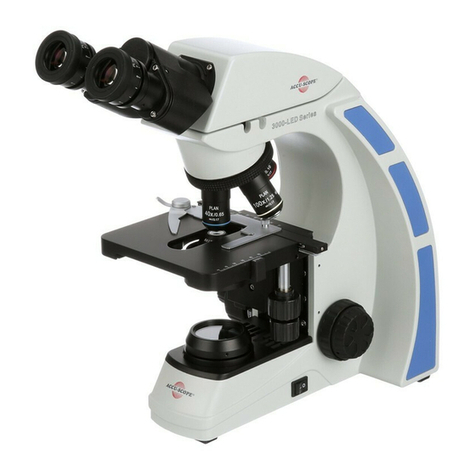
Accu-Scope
Accu-Scope 3000-LED series manual

Ecleris
Ecleris MICROSTAR OM-100 user manual
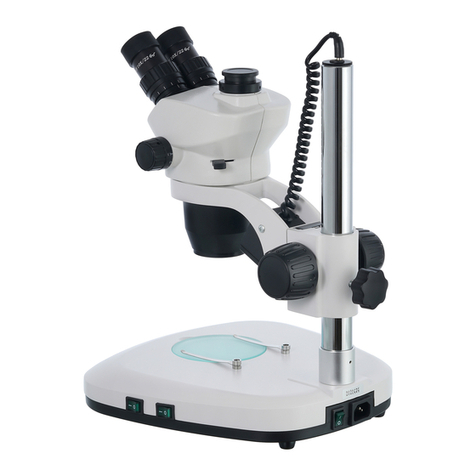
Levenhuk
Levenhuk ZOOM Series user manual
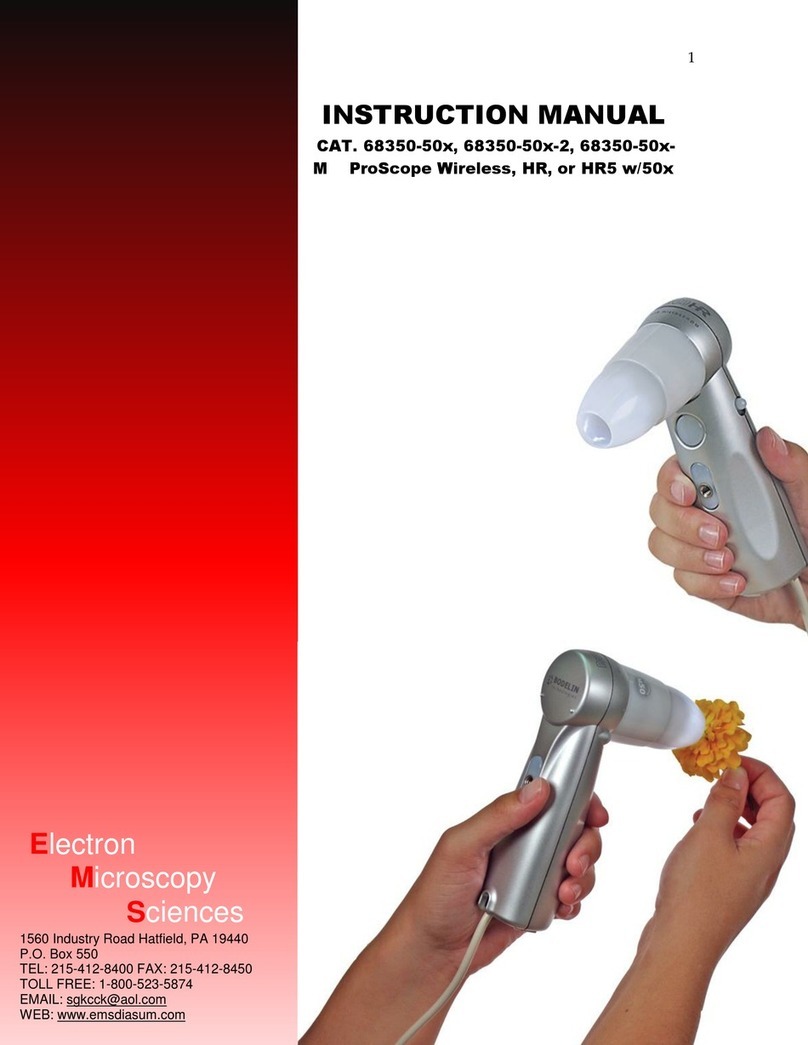
Electron Microscopy Sciences
Electron Microscopy Sciences 68350-50x instruction manual
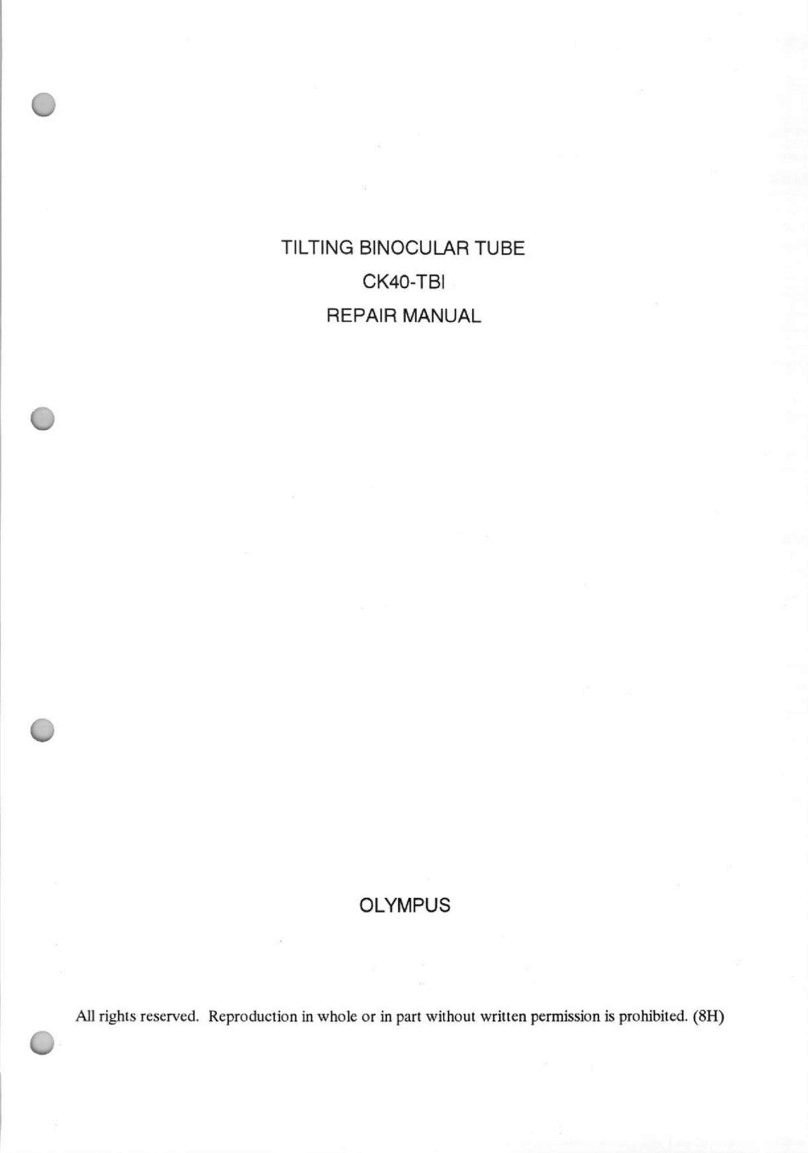
Olympus
Olympus CK40-TBI Repair manual
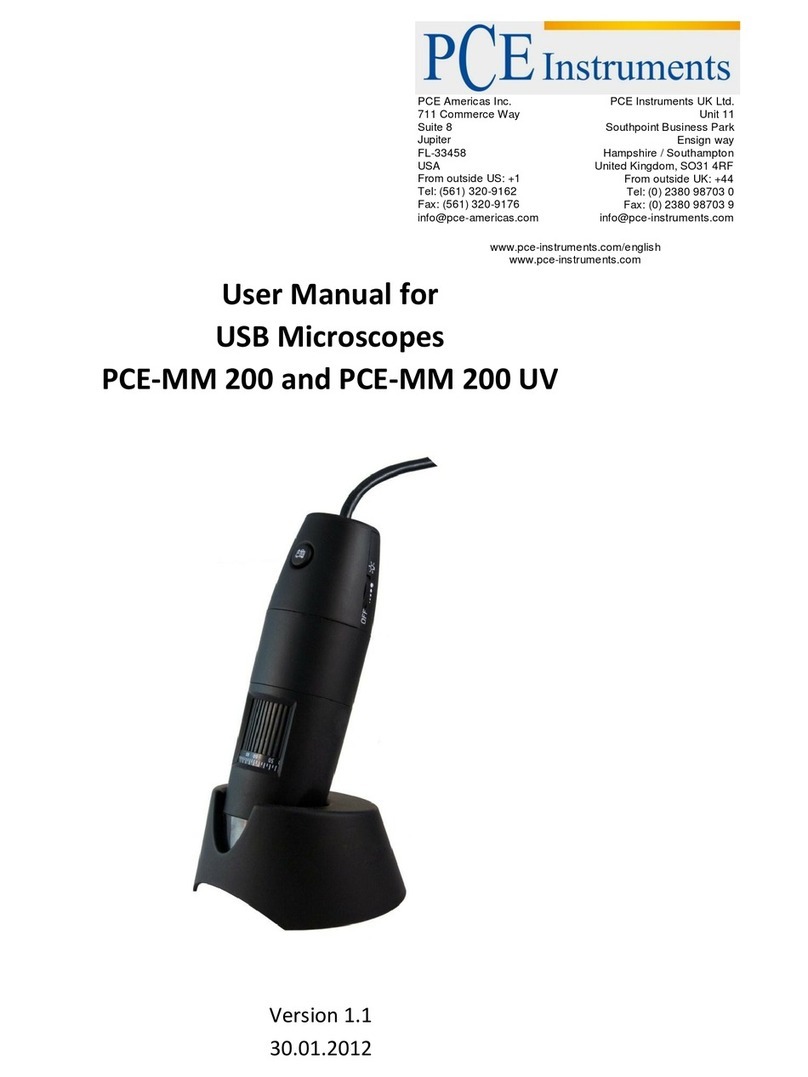
PCE Instruments
PCE Instruments PCE-MM 200 user manual

Bresser
Bresser StereoMicro 88-52000 operating instructions
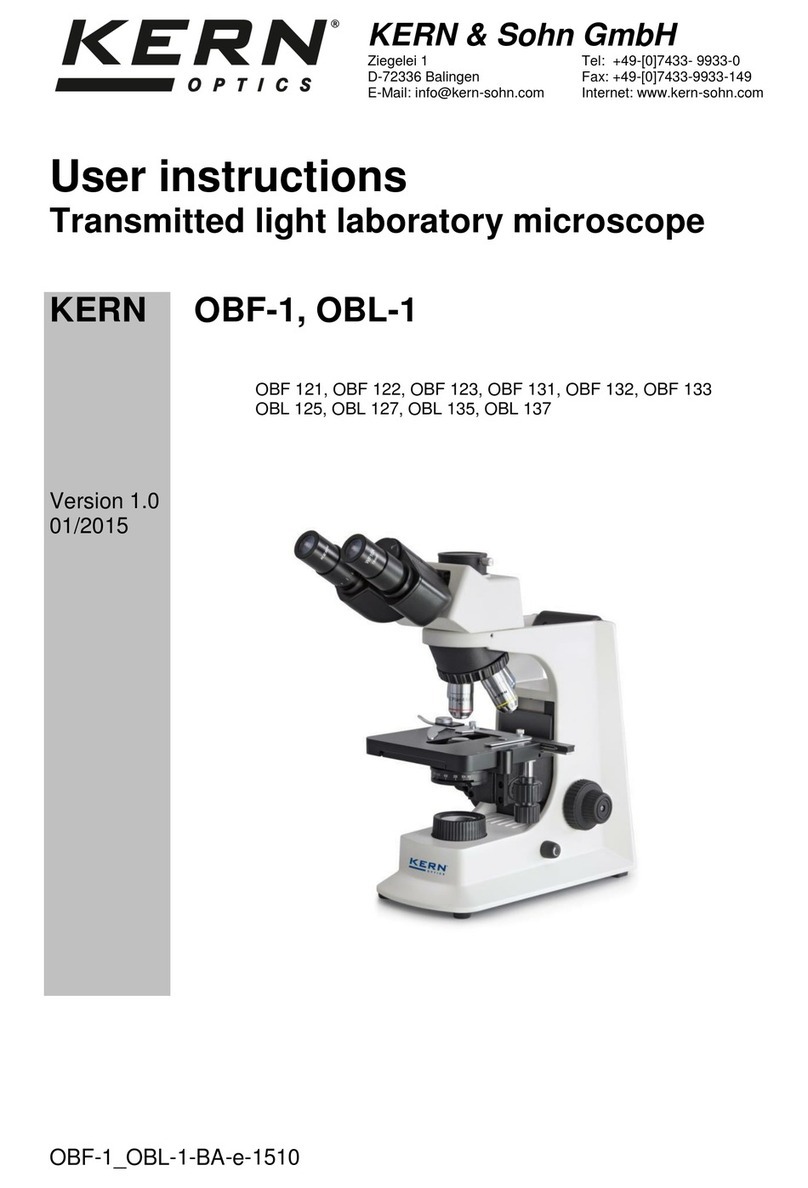
KERN Optics
KERN Optics OBF-1 User instructions

Nikon
Nikon Eclipse L200A Brochure & specs
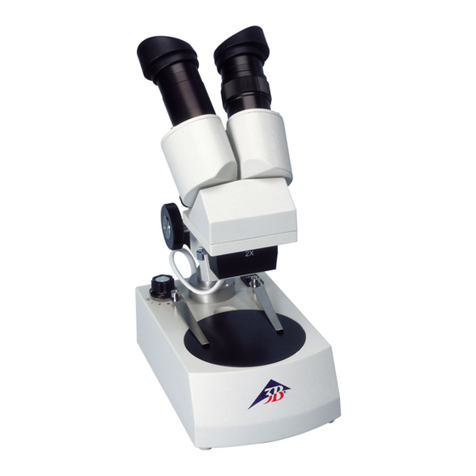
3B SCIENTIFIC PHYSICS
3B SCIENTIFIC PHYSICS 115 V, 50/60 Hz instruction manual
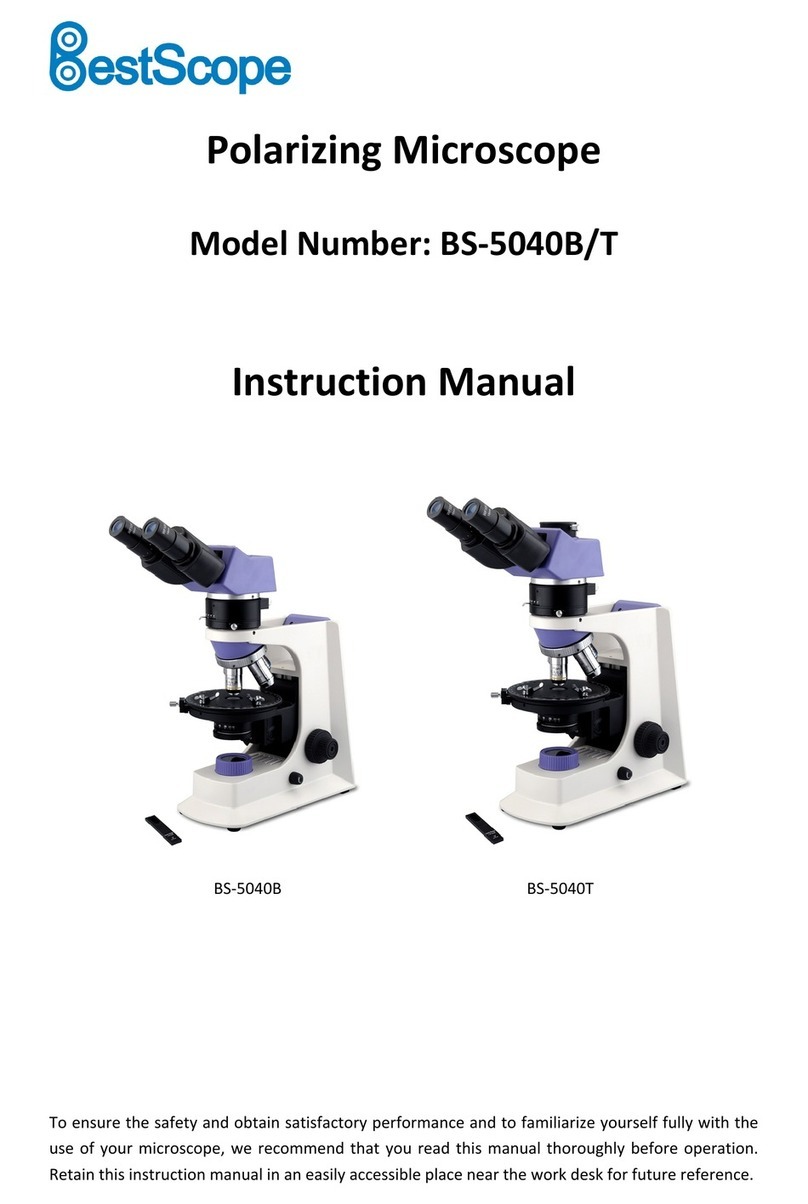
BestScope
BestScope BS-5040B instruction manual
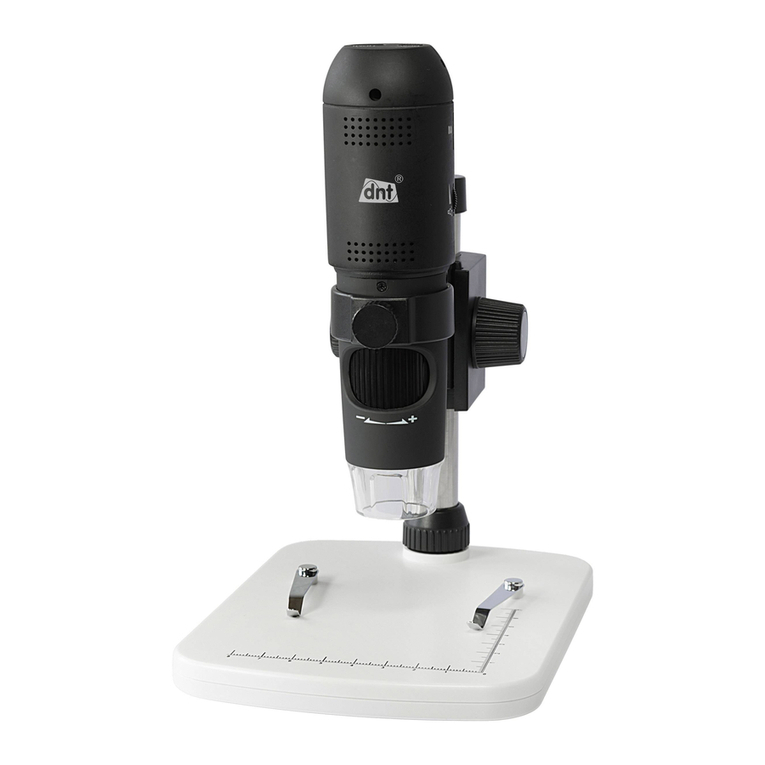
DNT
DNT DigiMicro Profi HDMI user manual
